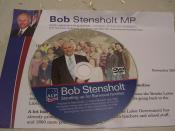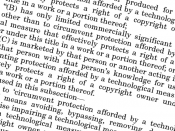What's wrong?
Ron Rivest asked me, "I think it would be illuminating to hear your views on the differences between the Intel/IBM content-protection proposals and existing practices for content protection in the TV scrambling domain. The devil's advocate position against your position would be: if the customer is willing to buy extra, or special, hardware to allow him to view protected content, what is wrong with that?"
First, I call it copy protection rather than content protection, because "content" is such a meaningless word. What the technology actually does is to deter copying. Such technologies have a long history in computing, starting with the first microcomputers, minicomputers, and workstations. Except in very small niches, all such systems ultimately failed. Many failed because of active opposition from their buyers, who purchased alternative products that did not restrict copying.
There is nothing wrong with allowing people to optionally choose to buy copy-protection products that they like.
What is wrong is when:
Competing products are driven off the market
What is wrong is when people who would like products that simply record bits, or audio, or video, without any copy protection, can't find any, because they have been driven off the market. By restrictive laws like the Audio Home Recording Act, which killed the DAT market. By "anti-circumvention" laws like the Digital Millennium Copyright Act, which EFF is now litigating. By Federal agency actions, like the FCC deciding a month ago that it will be illegal to offer citizens the capability to record HDTV programs, even if the citizens have the legal right to. By private agreements among major companies, such as SDMI and CPRM (that later end up being "submitted" as fait accompli to accredited standards committees, requiring an effort by the affected public to derail them). By private agreements behind the...


